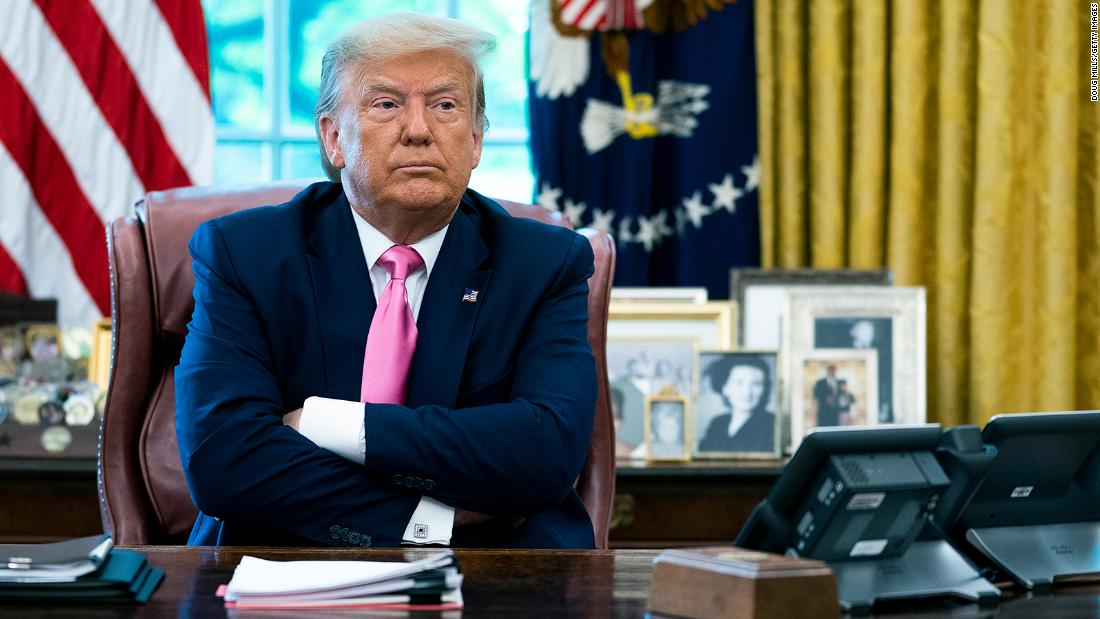
Trump unsuccessfully pressed for oneearlier in the year and the policy remained a key White House priority, even as a growing number of Republicans pushed back on the idea and most Democrats don't support it.
Payroll tax cuts have had mixed results in the past, and some economists argue that it's not the best way to boost the economy right now.
Here's what you need to know:
Workers would see more take-home pay
A payroll tax cut would reduce the amount taken out of workers' paychecks to fund federal programs including Social Security and Medicare.
Congress would have to decide how much to reduce the rate and how long the tax holiday would last.
Currently, workers pay about 7.65% of their wage and salary incomes. Employers match the amount while those who are self-employed pay both shares, though they get to deduct the employer portion.
A temporary payroll tax cut was implemented in 2011 in the aftermath of the financial crisis. It reduced the employee-side tax by 2 percentage points.
It won't help those most in need
A payroll tax cut would do nothing to help the more than 17 million Americans currently unemployed. It would also miss people who are out of the workforce, like retirees and those who care for children or other family members.
For the workers who would see more take-home pay, the benefit would be felt only over time -- similar to the boost many workers saw from the 2017 tax law, which changed income tax withholding. The economic effects would likely be less pronounced than from another round of stimulus payments. Direct payments are also easier to target at those most in need, reaching those out of work and giving more money to those with lower incomes, according to researchers at the Center on Budget and Policy Priorities.
Businesses could see a boost, but the virus is still a problem
A cut to the employer-paid tax would give companies a little more liquidity and may help those struggling to pay rent and other bills.
But it won't immediately help companies that have laid off employees or remain shut down. Some might not be back in business until the virus is under control and states can fully reopen.
An emergency loan program created by Congress made money available for small businesses hurt by the pandemic. The loans are forgivable if the business used the money to keep employees on the payroll -- but they were meant to cover only two months' worth of costs.
A tax cut reduces federal revenue
The payroll tax cut implemented in 2011 reduced federal tax revenue by $112 billion in its first year. It was then extended through 2012, costing an additional $115 billion, according to the Congressional Research Service.
Congress has already spent $3 trillion to help rescue the economy, which is likely to lead to a historic budget deficit.
Congress would likely replenish the Social Security and Medicare funds with general revenues, like it did in the past.
But Senate Finance Chairman Chuck Grassley, a Republican from Iowa, warned this week that a payroll tax cut would create a "public relations problem."
"People would think that we're hurting Social Security funds when we're really not," Grassley said.
A handful of Republicans brought up concerns about a payroll tax cut at a party lunch Tuesday with Treasury Secretary Steven Mnuchin and Trump's chief of staff, Mark Meadows, according to a person in the room.
"Maybe three people raised it and they were all saying the same thing: Maybe this isn't necessary," the person said.
"that" - Google News
August 10, 2020 at 01:05AM
https://ift.tt/33HnqCF
Trump keeps pushing for a payroll tax cut. Here's what that means. - CNN
"that" - Google News
https://ift.tt/3d8Dlvv

Tidak ada komentar:
Posting Komentar